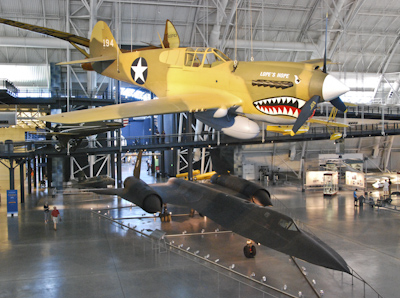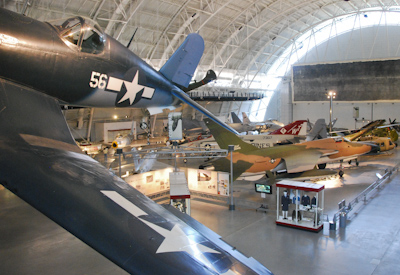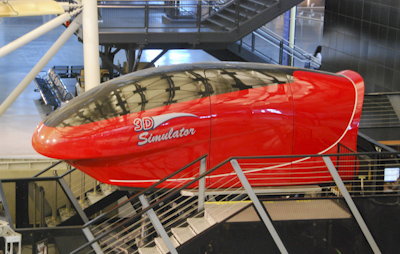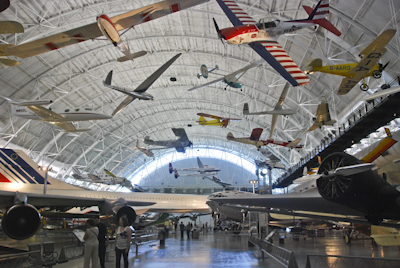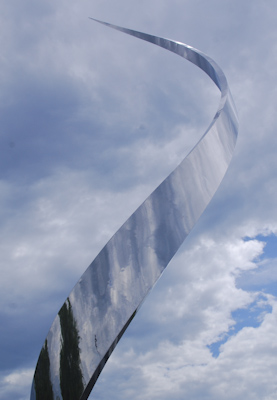Monday – May 12, 2014
The time had come to leave Washington and return home. We checked out of our comfortable room in the Willard and drove through Arlington on our way to Chantilly, Virginia. Our destination was the Smithsonian Institution’s National Air and Space Museum – the Udvar-Hazy Center which is located near Dulles International Airport.
 Udvar-Hazy Center of the Air & Space Museum
Udvar-Hazy Center of the Air & Space Museum
The center was a modern space-age building which was opened in 2003 and named for Steven F. Udvar-Hazy the wealthy Hungarian-born man who financed this annex to the National Air & Space Museum. The original Air and Space Museum is still located on the mall in downtown Washington, DC.
The museum was huge and was a living history of flight from early aviation to space exploration. One of the highlights was seeing an SR-71 Blackbird. It was a supersonic reconnaissance aircraft made of titanium in 1964. On its last flight in 1990, the pilot set a speed record by flying from Los Angeles to Washington, D.C. in 1 hour and 4 minutes. On that flight, the Blackbird flew 2,124 miles per hour.
We had fun walking among some of the most famous airplanes in the history of aviation. The air craft were organized in categories, for example Aerobatic, Cold War Aviation, Human Spaceflight, Pre-1920 Aviation, Korea and Vietnam, Ultralight, etc. etc. The museum was large with several connected hangars. There were multi-level stairways in the hangars which led to higher observation platforms. A visitor could spend an entire day at this museum.
We saw several different flight simulators. Several people were inside getting shaken up as we watched the pods rotate and move up and down. I passed up this stomach-churning activity!
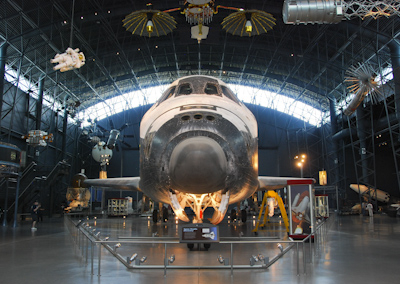 Front View of the Space Shuttle – Discovery
Front View of the Space Shuttle – Discovery
The Space Shuttle Discovery was located in the James S. McDonnell Space Hangar. It was considered a “national treasure” by the national Air and Space Museum. According to historic records, Discovery flew 39 times from 1984 through 2011 which was more missions than any other shuttle.
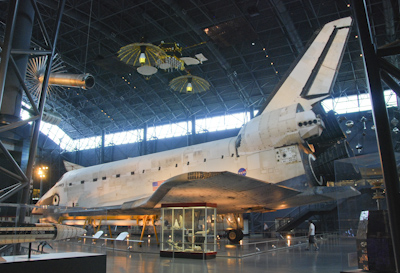 Side View of the Discovery Space Shuttle
Side View of the Discovery Space Shuttle
We did not have enough time to see everything in this amazing museum. However before we left we visited the hangar with several important airplanes. One of these was the Boeing B-29 Superfortress,the Enola Gay. This was the propeller driven bomber of World War II which dropped the first atomic bomb on Hiroshima, Japan.
A variety of smaller planes were suspended from the ceiling which gave the illusion of airplanes flying in the sky. Below these were several noteworthy commercial airplanes. There was a Boeing 367-80 jet Transport which revolutionized commercial air transportation it was developed and became the Boeing 707, America’s first jet airliner. Nearby was a real Air France Concorde, the first supersonic airliner which flew passengers across the Atlantic for 25 years.
